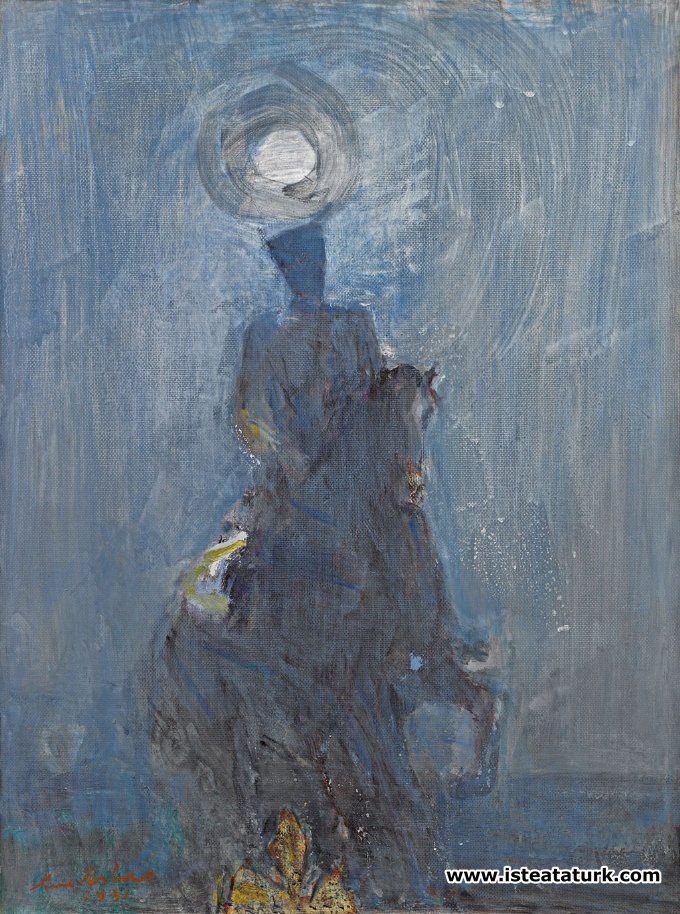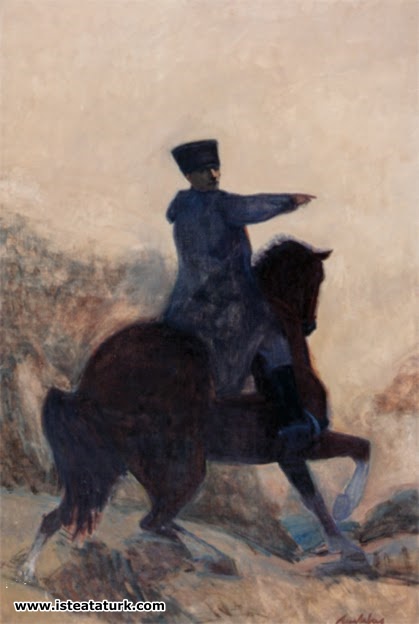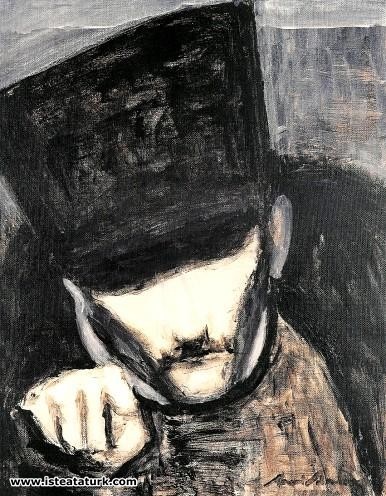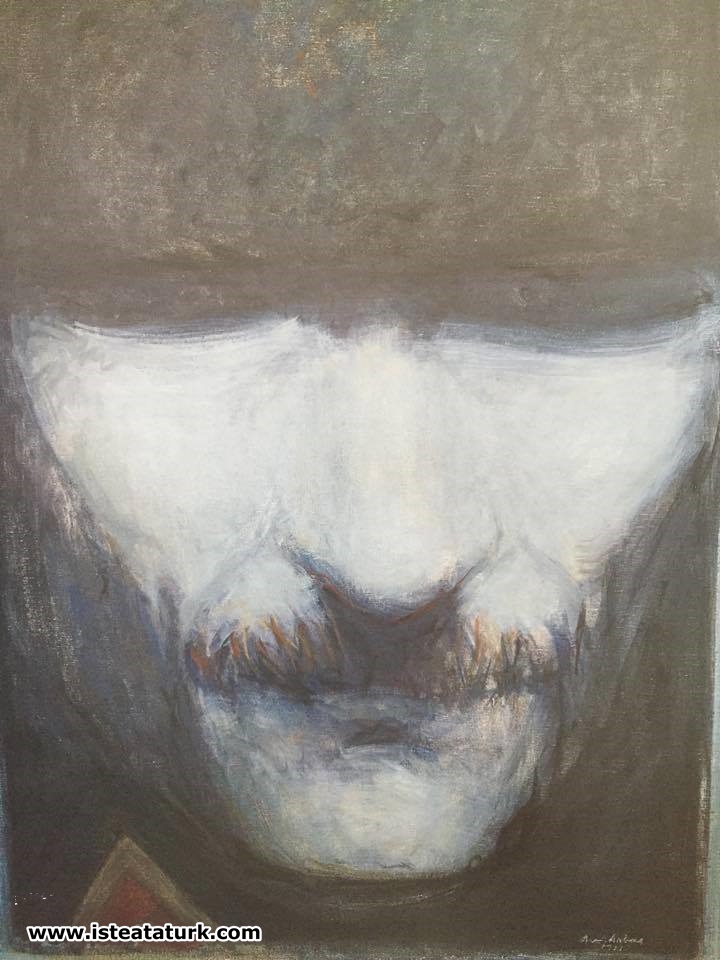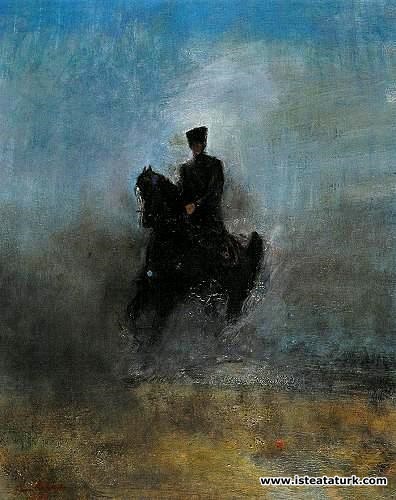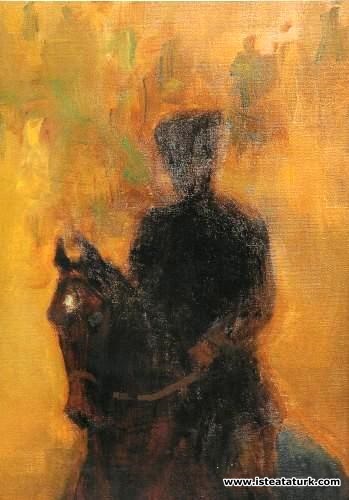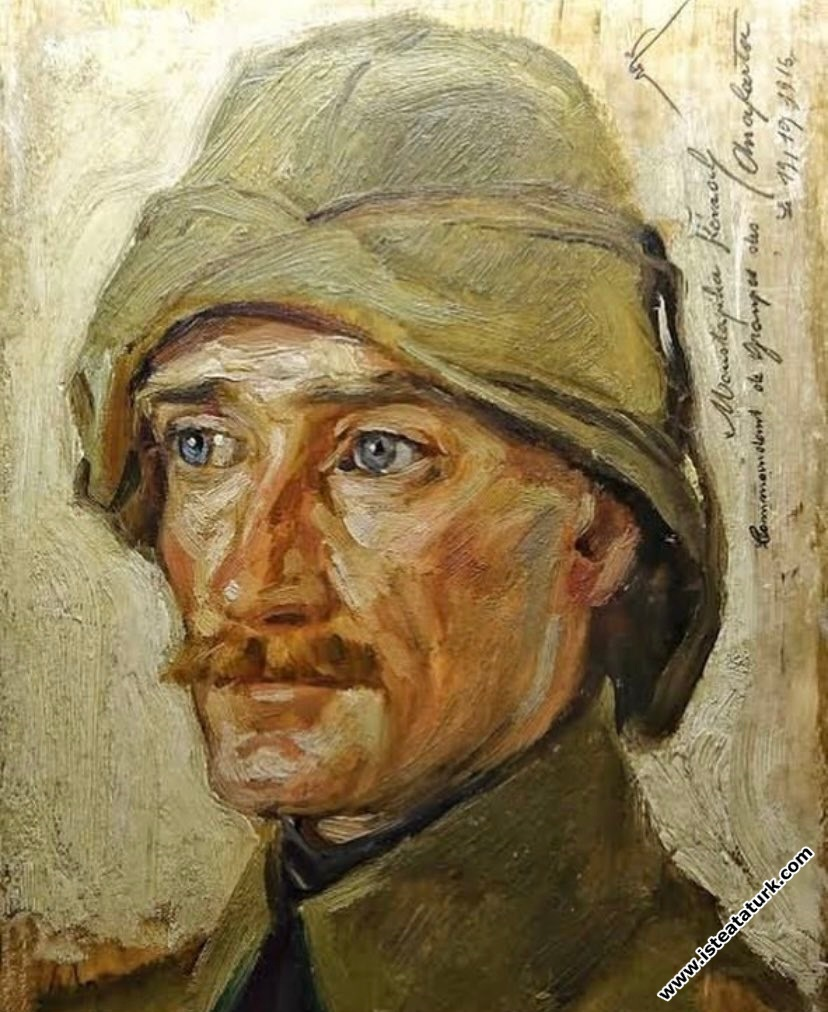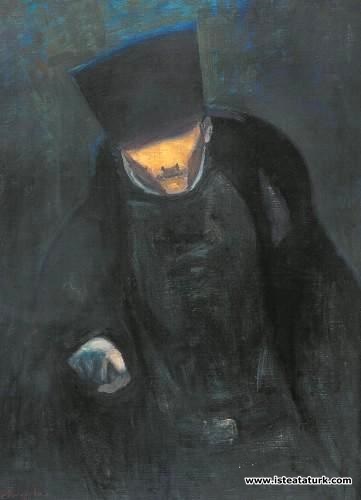
Avni Arbas, Mustafa Kemal, 1990
Character Size
Mustafa Kemal, 91 x 71 cm. 1990 oil painting signe
Avni Arbas (1919 - 2003)
Avni Arbaş was born in Istanbul in 1919. His father is Cavalry Colonel Mehmet Nuri Bey, one of the officers of the Kuvayi Milliye.
After the establishment of the Republic, the family settled in Aydın, where his father was in charge, stayed here until 1927 and Avni Arbaş started primary school here. When he was ten years old, he lost his father in Sivas.
This enlightened officer, who also paints and found a French teacher in Anatolia for his seven-year-old son, became the first teacher who instilled art in Avni (in his own words).
After Mehmet Nuri Bey's death in 1929, Avni comes to Istanbul with his mother, Rana Hanım. Here, he enrolls at Galatasaray High School without boarding. In this school, he finds an environment that will enable the seed of painting in him to sprout and develop: In the painting workshop under the direction of Mehmet Ali Bey, an art teacher and a military painter, important Turkish painters of the future such as Cihat Burak and Selim Turan work together.
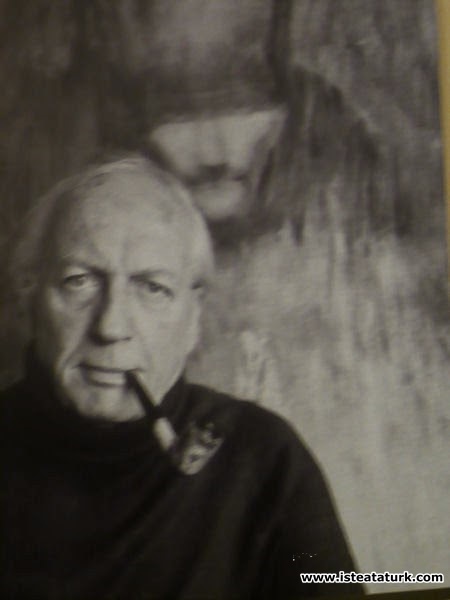
Avni Arbaş and Mustafa Kemal painting
While still a student, Avni Arbaş entered the bohemian artist circles of Istanbul. İbrahim Safi meets Naci Kalmukoğlu and works in their workshops. He starts attending night courses of the Academy called “Cours de soir” that provide a working environment and model for talented young people who are not registered students. Finally, that inevitable day comes: Avni leaves Galatasaray and enrolls in the middle section of the Fine Arts Academy Painting Department (1937). He first started working in Leopold Levy's workshop, where Çallı would later say with real arrogance, "I learned from him that painting has rules". She participated in the State Painting and Sculpture exhibitions during her academy years, where she stayed until 1946. The ruling party CHP, of course, One of the painters selected for the country tours organized by the efforts of the Minister of National Education Hasan Ali Yücel, a true man of culture, is the young Avni Arbaş. Luckily, Siirt has fallen. He meets the poor Anatolia of those years for the first time. (He must have remembered this trip to Siirt in his paintings, which were included in his first exhibition in Paris in 1954 and inspired by Mahmut Makal's Bizim Köy (Notes from a village teacher).
In 1943, Avni married a young girl of Tatar origin named Zerrin who speaks French. Meanwhile, she participated in various group exhibitions (especially the Harbor Exhibition). During the war years, he continued his education as long as he could (nine years!), as it was not very attractive to finish his education at the Academy, get the diploma and become a reserve officer and then a high school art teacher. And right after the end of the war, without getting his diploma (what was he going to do?), he went to Paris with a scholarship given by the French Government.
This city, which was the Kaaba of all world painters in those years, is in an extraordinary movement, vitality, search and innovation in the field of art, even though it has just come out of the war.
At the beginning of his adventure in France, which will last for thirty-seven years, Avni experiences a painful event: his wife Zerrin dies during childbirth. Avni gives her born daughter the name of her deceased husband. And after a while, the child is sent to Istanbul to his grandmother. (Avni won't be able to see her daughter for years.) But in her life, the painting must continue. The paintings Avni sent from Paris are exhibited in the newly opened Maya Gallery in Istanbul by Adalet Cimcoz (1951). This is his first personal argument. In his first exhibition in Paris (Galerie La Roue, May 1953), the majority consists of paintings that we can describe as human landscapes from Our Village. He married Henriette Lapouge in 1958, with whom he had been together since the early 1950s. In the portraits of Henriette, which he made for many years, Arbaş's portrait painter talent appears in all its dimensions.
Just like in the sketches and designs that he worked with from Nazım Hikmet, who occasionally ends up in Paris.
Avni Arbaş made a circle of friends in Paris, Antibes and Vallauris, including Picasso`s, Tristan Tzara`s, Aragon`s, Prevert brothers and took his place among Ecole de Paris painters.In 1966, he illustrates the third volume of Henry Montherlant's collected plays. This deluxe edition features fifteen original lithos made by the artist at the Fernand Mourlot Atelier. (Editions Lidis / Imprimerie Nationale, Paris 1966.)
However, not every state likes its artist and his achievements. He does not like his thoughts, he is worried about his reputation. He also strips Avni of citizenship on the grounds that he did not do his military service. Arbaş, who introduced himself as a Turkish painter all his life, was "apatride", that is, "stateless" when he returned to his country in 1977. However, after many years and long efforts, he can regain his citizenship. This Turkish painter, who has devoted his whole life to the world of colors and lines, has reflected the smells, colors, light and air of the world wherever he is in the world. After returning to Turkey, he continued to paint the ever-changing light of the Bosphorus and the Marmara Sea in Istanbul, the fishes, fishermen, fruits and flowers of the southern coasts.
Avni Arbaş is more interested in the essence, not the details, in his relations with life and his general approach. When she looks at nature and life, she sees the object she wants to paint, not the details. We can also call this a “selective” view. This gaze isolates the chosen one from the environment and cuts off the relationship with it. In a sense, the artist distorts the reality of nature. The expression of this view on the canvas is seen as the background gradually becoming clear of the figure and turning into color and the canvas becoming superficial, sacrificing details and placing the main figure in the middle of the canvas strikingly. We can say that Avni Arbaş has achieved a pure painting with striking simplicity, which emerges in color and form, in his paintings after going so far. In a way, his art is a purified art.
Source: Ferit Edgü, "Avni Arbaş", Türkiye İş Bankası Publications, İstanbul - 2001
Other Atatürk Works of the Artist
